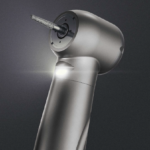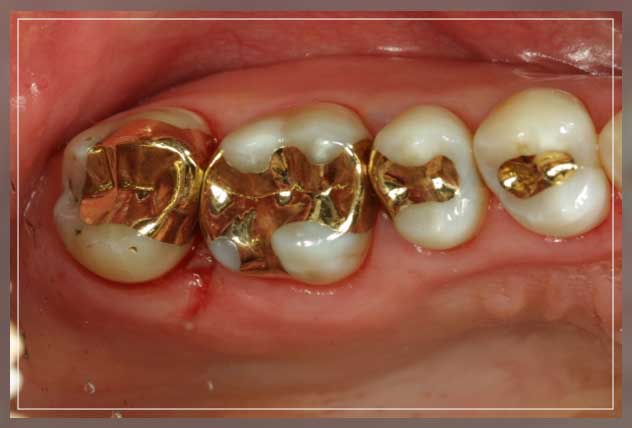
When you get cavities, the dentist will fill in the teeth using tooth fillings such as gold fillings.
After removing the decayed portion of the tooth, they will fill the area with fillings that can either be gold, amalgam, or tooth-colored composites.
Getting this treatment prevents the loss of your tooth.
Gold fillings in particular are also long-lasting and can remain for 10 to 15 years.
This article discusses the importance of these fillings and other many types plus materials.
Keep reading below to know more!
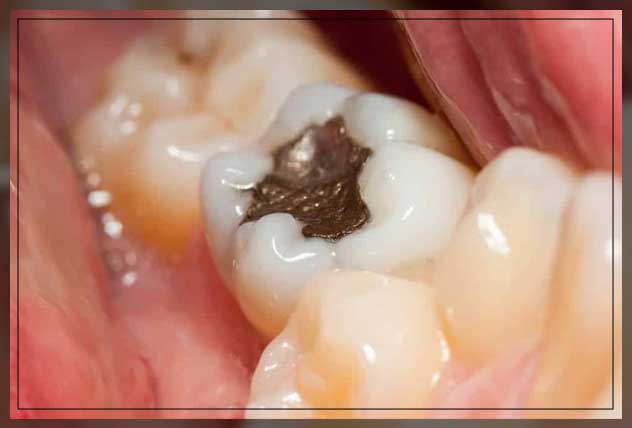
What Are Tooth Fillings?
When bacteria eat away at the tooth resulting in decay, fillings save the rest of the tooth from entirely diminishing.
It also works to repair broken and cracked teeth.
This condition results from worn-out enamel due to teeth grinding or nail biting.
In order to remove the decay and apply the fillings, the dentist will first numb the area with a local anesthetic.
After that, a dental drill, laser or an air abrasion instrument removes the decayed area.
The extent of the decay determines the instrument that the dentist will remove the decay. It can be one of those mentioned above depending on the comfort level of the dentist and how much extensive treatment is required.
After removing the decay, they will probe and test the area to assure that there is no more decay remaining inside and also prepare the space for filling.
First, they will clean the entire cavity to get rid of debris and bacteria.
The dentist will protect the nerves by adding a liner that is made up of glass ionomer.
This step is added when the decay is near the root.
Next, they will insert the filling, finish and polish it.
Tooth-colored fillings usually require more steps after adding the filling.
This includes applying the tooth-colored material in layers. To put it in place and harden it, a dental curing light is shed on the material.
After the multilayering process completes, the dentist shapes the material of the composite to achieve the desired result.
They will also cut and trim off an extra material remaining alongside polishing it for the final restoration.
Gold is one of the filling materials used that is in popular use.
However, there are other materials as well such as tooth-colored resin. Let’s know more below.
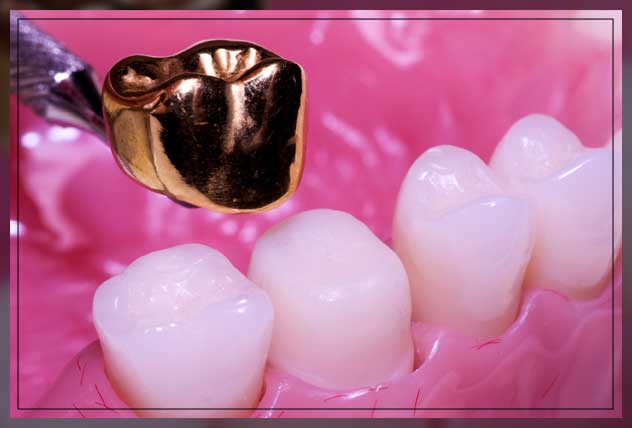
Materials Available
The materials available for dental fillings have expanded over the years.
You can get:
- Ceramics
- Silver amalgam (mercury with silver, tin, copper and zinc)
- Composite resin
- Gold
- Plastic
- Glass ionomer
Ceramics
These fillings are made up of porcelain hence they are tooth-colored.
When it comes to staining, ceramics are more resistant to staining than composite resin tooth-colored fillings.
These fillings last a long time, in fact even more than 15 years.
They are not more costly than gold fillings but rather come at the same price.
Silver Amalgam
These fillings are apparent and they do not match the natural color of teeth, therefore, silver amalgam gives an aesthetically poor appearance.
The color not only affects the tooth itself but also the surrounding teeth.
However, it is a strong filling.
It can withstand chewing action and is also comparatively less expensive than composite fillings.
Another advantage of these is that they last longer than tooth-colored composite fillings.
These can easily stay on your teeth for 10 to 15 years.
However, in order to hold the amalgam filling, the healthy parts of the tooth filling need to be removed.
Only then there would eb enough space to hold the fillings in place.
Moreover, it is important to remember that the amalgam material tends to expand and contract when it comes in contact with hot and cold liquids.
This makes it more prone to causing cracks and fractures.
While these fillings have their set of pros and cons, they are not fit for everyone.
Some may be allergic to the mercury present in it and that can have adverse effects if used.
Mercury present in the amalgam releases only low levels of mercury.
It is in a vapor form that can be absorbed and inhaled by the lungs, though not harmful.
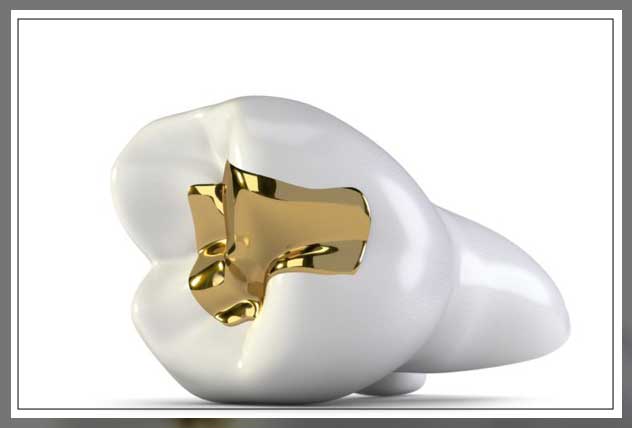
Tooth-Colored Material
Tooth-Colored Composite Resin
The biggest advantage of the composite resin is that it is of the same color as the tooth.
Therefore, it is the most aesthetically pleasing option.
The shape and color match your teeth.
Thus, they will not look any different. These fillings suit the visible part of your mouth such as the front teeth.
Composite fillings are not only popular in use for filling decay but they can also repair broken, worn out and chipped teeth.
When it comes to bonding with the structure of the tooth, these fillings bond micro-mechanically to support the structure of teeth.
In these fillings, the dentist does not need to remove as much tooth structure as they do with amalgam fillings.
It includes a tooth sparing preparation while cleaning the decay and adding the fillings.
That said, this material also has its set of cons.
This is a lengthy procedure because there are additional steps while applying the composite. Though, it will only take 20 minutes longer than a amalgam filling.
Besides that, there is a risk of composite material chipping off the tooth.
This means that composite fillings are not as durable.
They will wear out sooner, lasting only 5 years compared to amalgam fillings that last 10 to 15 years.
Plus, they will not last longer due to chewing pressure and if the cavity is large enough.
These are also more expensive than amalgam fillings and the application may require more than one visit for inlays and onlays.
Glass Ionomer
This is made of glass material and acrylic.
It is ideally for fillings in children and those below gum line.
The material is weak and suceptible to fracture and wear.
Glass ionomer will last for five years.
Though, it releases fluoride which can protect teeth against decay.
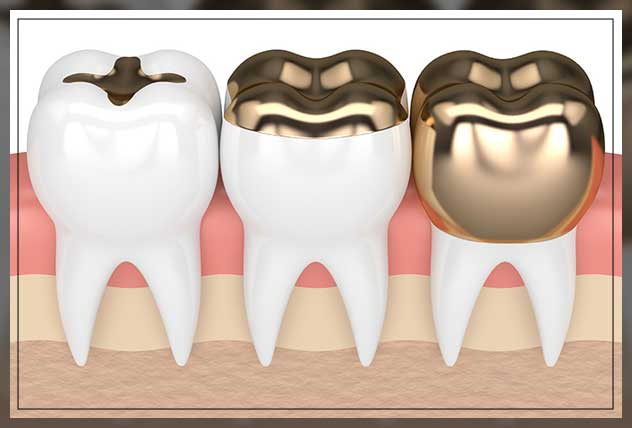
Gold Fillings: What Are They?
These fillings are also known as inlays or onlays.
However, is it pure gold?
While it does have real gold, it isn’t pure gold but an alloy.
Hence, the mixture of other metals includes copper, silver, gold, and zinc palladium.
Pure gold is usually very soft so it does not make a good material for fillings that will contact teeth and hard food particles.
However, gold alloys are stronger. They are used instead because:
- Gold is malleable so it fits the tooth and the cavity area exactly without leaving any gaps
- Gold alloys are ductile so they will not fracture or crack like composite or porcelain fillers.
- The alloy is durable and strong so it can last longer than other filling materials provided it is well taken care of. Pure gold in comparison is softer but is also used at times for filling in teeth that do not egt enough pressure.
- Gold is also compatible with human tissues and is resistant to corrosion hence it lasts long.
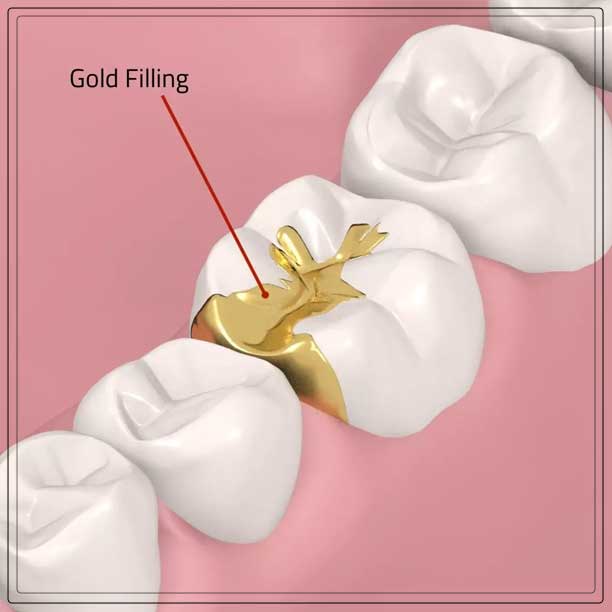
The direct placement of a gold filling is a gold foil restoration.
These are only useful for small fillings.
A gold foil is not as commonly performed though, it can be applied in a single visit just like amalgams and composite resins.
However, gold fillings may require more than one visit because first the dentist manufactures impressions.
They will drill out the cavity.
Next, make a cast impression of the hole and fill it with a temporary lining.
The impression is used to make a gold filling that fits into that hole.
In the next appointment the dentist attaches the filling and fixes it in place.
Thus, this process requires two visits to securely cement the filling in place.
Like every other filling, this has pros and cons.
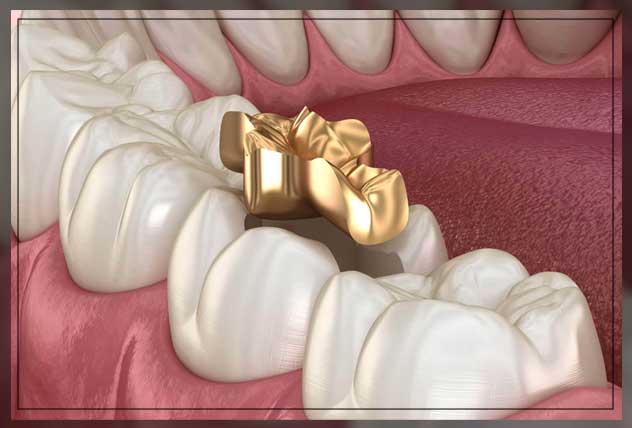
Pros and Cons of Gold Fillings
Pros
This is a very durable filling that lasts easily 10 to 15 years or more.
It does not corrode easily so that increases its longevity.
Moreover, it is a strong material so it can easily withstand the chewing pressure and forces that apply while eating food.
While gold filling are not tooth-colored, some may still prefer them over amalgam.
In fact, some may prefer to get gold fillings for aesthetic purposes.
Cons
You will need to visit the dental clinic twice rather than completing all the procedure at once like in other fillings.
Aesthetics are an advantage and also a disadvantage.
Some people may prefer metal colored or tooth-colored fillings instead.
Given its advantages and the material used, the cost for cast gold fillings is much higher than that of other materials.
In fact, it can cost upto 10 times more than silver fillings.
Besides that, there is a rare chance of a galvanic shock.
If a gold filling is right next to a silver filling, it can result in a sharp pain.
There can be a reaction with the metals and saliva causing an electric current.
Finally,
Gold fillings are one of the material for tooth filling and restoration due to decay.
It is best to take care of your teeth to avoid any such extensive dental procedure.
However, if it has come to treatment, you should get fillings that are long lasting and durable such as gold fillings.
However, explore your options and ask your dentist relevant questions that what will be suitable for you.
After all, all of the fillings have their set of advantages and disadvantages.
So choose wisely!



